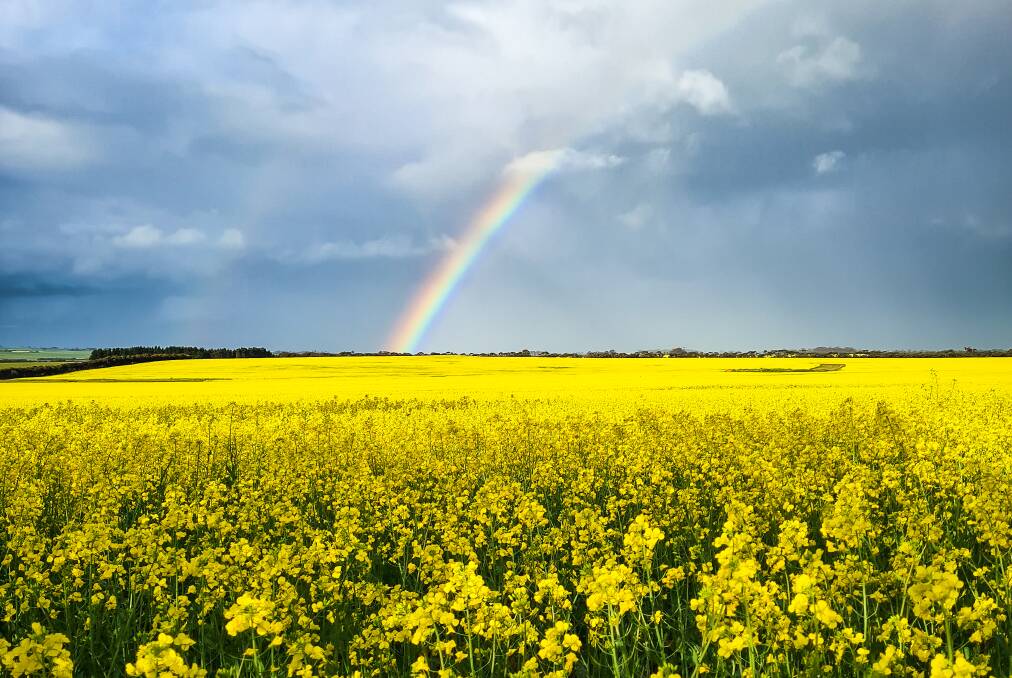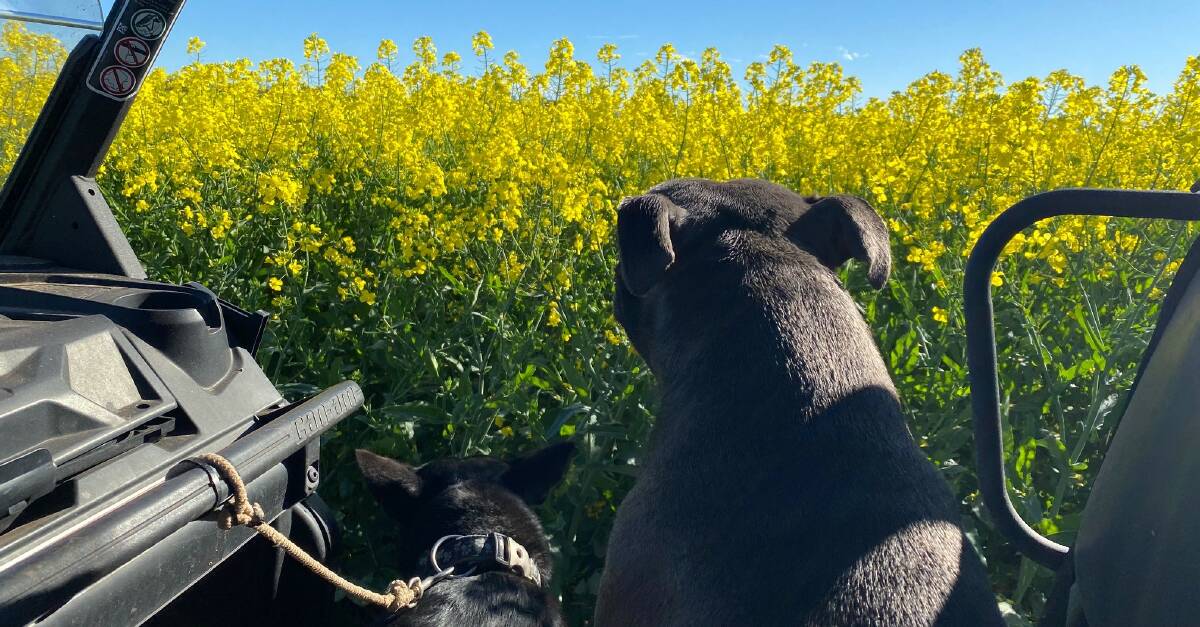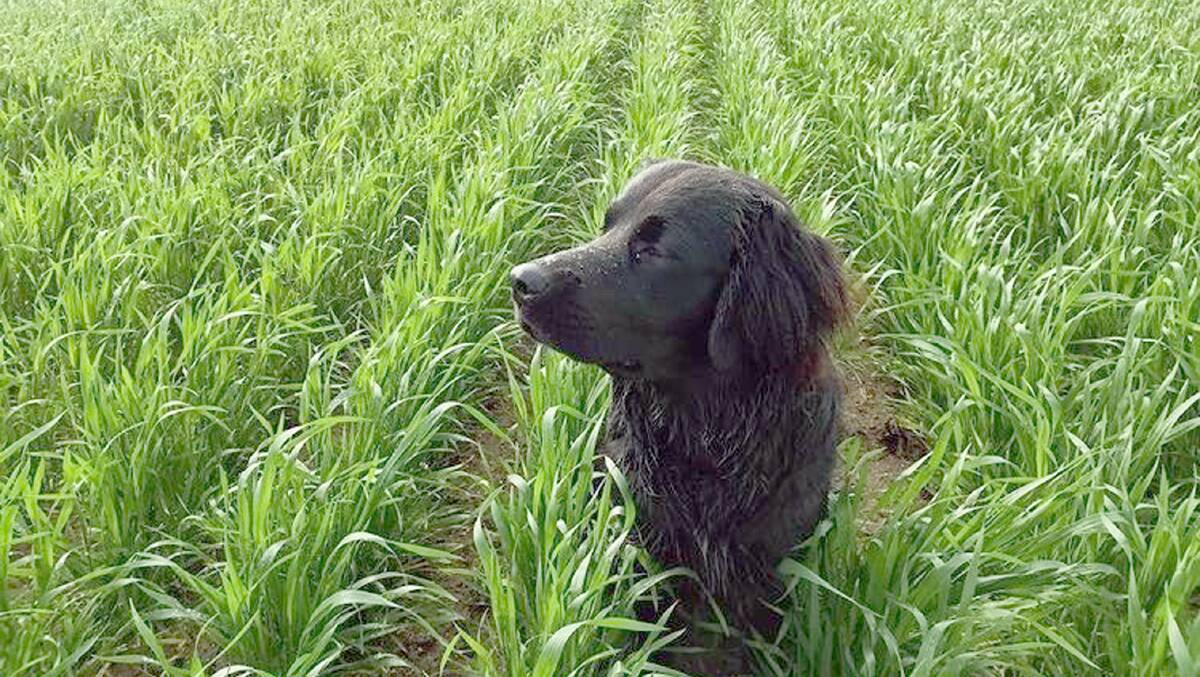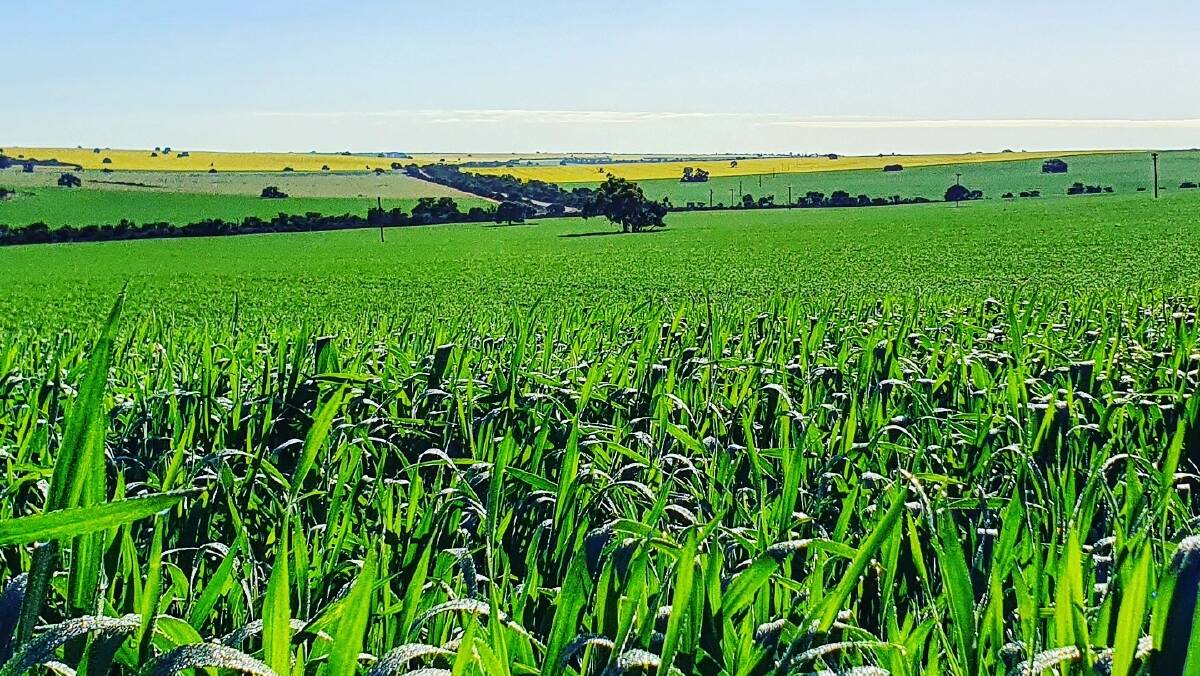
IN a year of unprecedented events, first-ever occurrences and history-breaking feats, the WA grain harvest has been tipped to set its own record, with the Grain Industry Association of Western Australia (GIWA) last week predicting just over 20 million tonnes for the 2021 season.
Subscribe now for unlimited access to all our agricultural news
across the nation
or signup to continue reading
According to the GIWA August Crop Report, based on current crop growth, timing of crop development, sub-soil moisture and the area planted, there is significant upside potential.
However, crop tonnage estimates rarely increase from this time of the year as unfavourable climatic events and other risks can substantially reduce the final outcome.
Crop report author Michael Lamond said frost was shaping up as the greatest risk to achieving or exceeding the current estimated tonnage.
"Whilst there is a big spread in crop development across the regions which will help minimise the risk of large wipeouts from one-off frost events, the early start to the season means the whole crop will be exposed to a longer period of risk," Mr Lamond said.
"An upside to this is that recovery from frost is likely to be better than normal due to the good levels of subsoil moisture.

"The continued loss of crop area to waterlogging and the capacity of these areas to recover before harvest will also have an impact on final tonnage in those areas worst affected."
Heat stress is still a potential threat as it is in most years, although the above average levels of subsoil moisture across WA will help crops get through any spikes in temperature during grain fill.
Crops have more top growth than normal and shallow root structures from the soft growing conditions, which could lead to a very quick deterioration in grain yield when the inevitable heat comes on.
The very good growing conditions have brought with it the increasing risk of mice damage to canola and lupins particularly in the northern areas of the State and locusts to all crops in the eastern areas.
Mr Lamond said foliar disease in all crops was starting to get going in the south and sclerotinia is a threat to all canola crops.
"Weather conditions leading up to harvest are forecast to be drier than average which will have a positive impact in what has been a very wet year to date," he said.
"With significant strain on the whole grain supply chain from the tight labour supply situation and well above average expected tonnage, harvest could be a drawn-out affair, exposing growers to higher than normal harvest losses.
"On balance, whilst most growers are experiencing one of the best years in recent times and a record tonnage is likely, there are still the usual risks out there along with some that WA growers have not experienced for a while."

Geraldton zone
The Geraldton port zone is on target for a record tonnage this year, with canola, lupins and most of the wheat going in a month earlier than last year and higher rainfall than usual.
Growing conditions have been excellent all year right across the zone and the lower rainfall eastern regions are the best they have been for many years.
Mr Lamond said there was very little fallow in the east and the resulting increase in cropped area will contribute significantly to total tonnage for the zone.
"Nitrogen application rates have been higher than normal which is fuelling excellent crop health and has assisted in lifting crop grain yield potential to above average for all crops," he said.
"At this stage, leaf disease and insects are under control except for the wet areas where there have been delays in getting control measures in place, while sclerotinia is shaping up as the main risk for canola and lupins due to the warm wet conditions.
"Most growers have opted for a two-spray strategy earlier on in the year to protect the above average potential, with those that opted for that strategy set to be a long way in front of those that were slower to react to the season.
"Frost will be the first hurdle to get over in the next few weeks in order to achieve the current crop yield potential, that is followed by mice and then insects as the day temperatures increase heading into summer."
The usual heat stress is expected to potentially have less impact due to the good levels of subsoil moisture and advanced crop development.
Kwinana North Midlands
All crops across the zone are in very good shape for this time of the year - the early start, good growing conditions and 15 to 20 per cent more nitrogen use has driven crops to a higher potential than 2016.
Frost is the main risk going into spring, however it's expected that even with some potential reduction in yield due to frost, the spread in planting dates, good levels of subsoil moisture and very good crops in every corner of the zone, will mean current tonnage estimates will hold through to harvest.
Mice are also causing damage to canola and lupins with most growers now baiting for the inevitable increase in activity as it warms up.
The oat hay area is down by more than half in the region, although due to the present excellent potential, production could be close to average.

Kwinana South
The zone has been split in half as a consequence of weather.
"10 to 15pc of the western areas are severely affected by water- logging and additional areas are losing potential with every rainfall event," Mr Lamond said.
"The early sown crops are holding up, although later sown low-lying country will end up with below average yields.
"Further east, the grain yield potential is up to 50pc greater than normal for many growers and the dry area in the central portion of the zone has picked up some good rainfall in July and is now on track for above average tonnages."
Kwinana North East
The whole zone is looking forward to one of the best years for a long time.
The huge areas of wheat in the zone are going to contribute significantly to WA's total tonnage provided there are not any major downgrades in potential due to frost and heat stress.
Subsoil moisture reserves are very good and the crops are running into head now which is perfect timing to minimise the impact of heat stress.
Avoiding frost in the next few weeks will be critical in determining the final outcome for the region.
Albany West
Total tonnage out of the region may be down on recent years due to less crop being planted as a consequence of the country getting too wet to get planting finished, coupled with severe waterlogging in the low-lying areas.
"There are some very wet areas where significant areas of paddocks are un-trafficable and will yield well below average, although across the whole region the total area is closer to 5pc severely affected and around 20pc affected to some degree," Mr Lamond said.
"Most growers do not expect crops to hit the very high yields of the 2020 season, although the good areas are looking very good and this will help to push paddock averages up.
"The biggest threat at the moment in the region for growers is rain, as a wet spring will quickly push those waterlogged areas up and will not allow growers to finish off crop protection programs."
Leaf disease is under control in most crops and growers are monitoring disease development for spot type net blotch in barley and sclerotinia in canola.

Albany South
The whole region has suffered from the above average winter rainfall and total tonnage will be below average now due to waterlogging.
Up to 20pc of the intended crop area was not sown in some portions of the zone and up to 10pc will be sprayed out and resown when it dries out enough to get over the ground.
Canola has been severely affected, with up to 20pc of the area cropped to canola expected to yield about one third of average, however cereals seem to be handling the waterlogging a little better than the canola and the expected downgrade in tonnage will not be as significant.
Albany East (Lakes Region)
Crops right across the region look fantastic as a result of the early start, good growing conditions and higher than ever nitrogen use.
Mr Lamond said there were still good reserves of subsoil moisture and barring some disaster, growers will be well up on average production.
"There are some very wet paddocks although the worst is confined to the very low-lying spots," he said.
"The major risk going forward is frost of course - crops are early and will be vulnerable over the next few weeks.
"It is hoped that the widespread planting dates and moisture in the ground will help mitigate the risk of large wipeouts from frost in the spring."
Esperance zone
The whole zone is looking good from top to bottom - there is less waterlogging in the region than further west, except for right on the coast which could put a cap on average grain yields.
"The crops are well grown and the drier areas to the north are having a very good year and as a result, it is expected the zone will end up with a record tonnage," Mr Lamond said.
"There is still a way to go before grain is in the bin, although as there are no poor spots in the zone and even with some downgrades going forward, grain production is expected to be in excess of 3mt.
"Growers have adopted a high production strategy all year and more nitrogen than ever has been used on crops, so the potential top end yields are there if the finish is about average."
Crops have been well protected from disease and insects to date, although mildew is just starting to crank up in the cereals and spot type net blotch is appearing in barley.
While there are risks ahead for the zone, it is difficult to see how a new record tonnage will not be on the cards.

